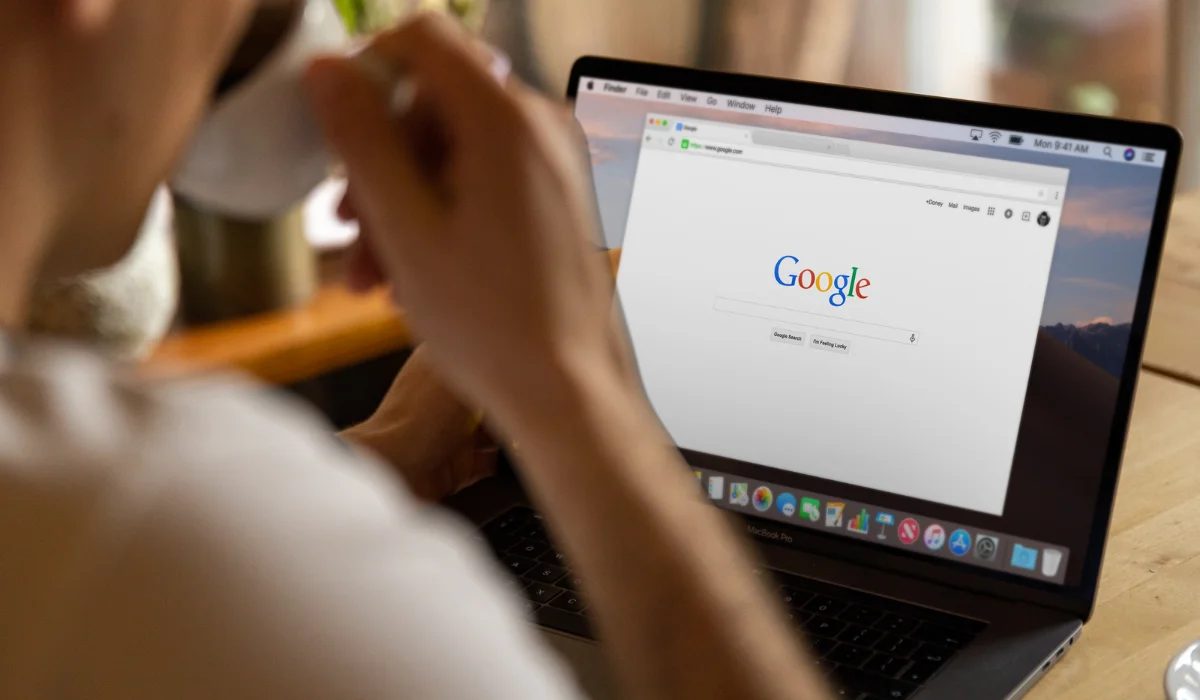L’importance de bien choisir son logo
Véritable emblème d’une marque, le logo est un élément de communication indispensable à toute entreprise qui souhaite laisser une impression positive dans l’esprit des consommateurs. Mais concevoir un logo unique, de qualité et représentatif d’une marque ne se fait pas d’un claquement de doigts, et s’inscrit bien souvent au sein d’une véritable stratégie marketing pensée en amont.

Le logo vous rend reconnaissable
Peut-on se passer d’un logo ?
Pour toute entreprise ou marque qui a vocation à se faire connaître, à se développer ou à pérenniser son business, la réponse est non : elle ne peut difficilement se passer d’un logo. En effet, c’est un élément central de l’image de l’entreprise, et pour séduire un potentiel client au premier regard, c’est bien sa communication visuelle qu’il faut soigner.
Sans logo, c’est un peu comme être invisible aux yeux des consommateurs. Vous n’êtes pas reconnaissable parmi les marques concurrentes, tandis que si votre logo de qualité trône fièrement sur vos supports web (site internet, réseaux sociaux, etc), vos supports print (cartes de visite, flyers, flocage de voiture, etc) ou encore vos produits, vous offrez au monde une image qui s’imprimera dans les esprits comme appartenant à votre marque.
Dans une société ultra-connectée et assaillie de toutes parts par des messages commerciaux plus ou moins forts, la durée de l’attention du consommateur est très courte. S’il est interpellé d’un premier coup d’œil par votre logo, qui lui est attractif et qui lui permet de comprendre votre entreprise, vous avez déjà réalisé une partie du travail de conversion.
Le logo, élément central de votre univers graphique
Le logo, aussi appelé logotype, est l’un des éléments les plus importants de l’identité visuelle de votre marque ou entreprise. Il s’inscrit dans un univers graphique dans lequel on retrouve le choix des couleurs, les éléments graphiques distinctifs, les polices d’écriture et bien plus encore. Cet univers graphique doit être homogène et offrir une expérience visuelle cohérente en elle-même, mais aussi envers votre activité ert ce qu’elle représente.
On imaginerait mal, par exemple, une entreprise d’experts-comptables avec un logo très enfantin, qui côtoierait des polices très graphiques et des couleurs austères. Cet ensemble n’a tout simplement pas de sens : ni en lui-même, ni envers le professionnalisme et la confiance que souhaiterait inspirer l’entreprise.
L’univers graphique d’une marque s’entend ainsi au-delà du logo, mais ce dernier lui est central et absolument nécessaire. Ses déclinaisons, utilisations autorisées tout comme interdites sont bien souvent décrites au sein de la charte graphique, dont la réalisation s’inscrit dans une stratégie de communication visuelle qu’au sein de notre agence, nous vous conseillons de mettre en place.
Comment se constitue un bon logo ?
Un bon logo est à l’image de la marque
Première vitrine de la marque, le logo doit porter sur ses épaules le poids d’accrocher les consommateurs et de représenter fidèlement le message et les valeurs que souhaite véhiculer l’entreprise. Si l’entreprise cherche à toucher un public jeune, un logo minimaliste ou décalé sera plus impactant qu’un logo sérieux et complexe. Au contraire, si une entreprise cherche à inspirer le luxe et la confiance, il faudra peut-être éviter les couleurs trop criardes et les polices enfantines. La création du logo ne peut se faire sans prendre en considération le type de produits ou services que l’entreprise a à vendre.
C’est pourquoi la création d’un logo prend généralement du temps, car hormis la durée imputée au design en lui-même, c’est tout un travail de conception et de portée marketing qu’il faut envisager. Prenons ces idées de logos, proposés par le logiciel Canva gratuitement, et imaginons leur adaptation à de vraies entreprises :

- La première utilise des couleurs douces et agréables, avec un logo d’arc-en-ciel qui semblent avoir été peint, ce qui retransmet plutôt bien l’enfance, ce qui pourrait convenir comme dans l’exemple à une boutique pour enfants.
- Dans le second exemple, créé dans l’idée de convenir à une entreprise de nettoyage, le logo vise quelque chose d’apparence plus abstraite. La mouvance du logo avec la présence des petites étoiles, le tout dans les tons bleus, nous fait automatiquement penser à quelque chose de propre et brillant.
- Et enfin, un logo n’est pas obligatoirement imagé : dans le troisième exemple, il est graphique, d’une couleur flashy et le nom de la marque est écrit d’une manière qui n’est pas sans rappeler la peinture. On imagine ainsi très clairement une marque de maquillage ou de produits cosmétiques moderne et affranchie.
Un bon logo est attractif
Cela va sans dire qu’un bon logo doit plaire aux futurs consommateurs ou clients de la marque. Ce qui veut dire que le logo doit être de bonne qualité, ne pas être trop choquant au risque d’être offensant ou déplaisant, avec un choix de couleurs qui se marient bien entre elles et ne pas contenir trop d’informations. Ce dernier point est assez important, car on oublie souvent que le logo est parfois amené à être disposé sur divers types de supports, et doit être lisible en toute circonstance, même lorsqu’il est en tout petit.
C’est donc une bonne chose de souhaiter raconter une histoire à travers son logo, mais il faut faire tout de même attention à ne pas le surcharger de symboles, d’images, d’illustrations, d’icônes et de texte, au risque de saturer les consommateurs. Il vaut mieux un logo simple, minimaliste, qui invite à la découverte plutôt qu’un logo trop complexe, et les tendances graphiques actuelles vont toutes dans ce sens.
Un bon logo est pratique
Les meilleurs logos sont souvent ceux qui sont le plus pratiques : avec un seul symbole, une seule illustration, adaptable partout, lisible même en petit format, la marque est reconnue aisément. C’est le cas de géants tels qu’Apple ou encore Nike, qui au moyen de leur icône reconnaissable d’entre toutes, font un pied de nez à leurs concurrents.

Un bon logo doit également être de bonne qualité, dans des formats adaptés aux nombreux supports sur lesquels ils ne risquent pas d’être dénaturés. Il peut posséder plusieurs versions de couleur sur lesquels il tranchera mieux selon le fond sur lequel il sera apposé. Par exemple, au sein de notre agence, nous créons régulièrement des variantes de logo pour nos clients afin qu’ils soient lisibles à la fois sur fond clair comme sur fond sombre ou coloré. En somme, il faut penser aux utilisations diverses que votre logo pourrait avoir lors des premières étapes de sa conception.
Un bon logo vous démarque des marques concurrentes
Le secret d’un bon logo, c’est de pouvoir trouver le juste milieu entre ne pas trop s’éloigner de sa thématique et se démarquer du lot. Pour cela, il est toujours conseillé d’aller voir ce que font vos concurrents pour se faire une idée du type de logo auquel est habitué le consommateur. En revanche, il ne s’agit pas de faire un simple copié-collé, mais d’aller chercher plus loin en rendant votre logo véritablement unique. Vous pouvez par exemple lui injecter un élément lié à l’histoire de la création de votre entreprise, créer une mascotte qui sera utilisée sur vos communications, lui donner une dimension plus digitale ou bien encore sortir des codes couleurs habituellement utilisées par les marques concurrentes.
Comment et par qui créer votre logo ?
Le créer soi-même pour réduire les coûts
Créer soi-même son logo pour faire des économies sur la création graphique peut sembler comme une bonne idée, mais à moins d’avoir des compétences tangibles en termes de graphisme, nous vous le déconseillons fortement. Car il ne suffit pas d’avoir la bonne idée pour son logo (même si c’est déjà un très bon départ), mais il faut savoir l’appliquer en concevant, assemblant et dessinant le logo et l’adaptant à des formats compatibles avec tous vos supports. Il faut savoir gérer l’espacement, les couleurs, la transparence, les formats, la lisibilité et les différentes variantes dont vous aurez besoin.
De nombreux outils d’aide à la création de logo ont vu le jour ces dernières années, et même s’ils sont gratuits au premier abord, leur version plus aboutie demande le plus souvent un abonnement mensuel, comme dans le cas de Canva, pour ne citer que le plus connu d’entre eux. De plus, ces outils ne vous conseillent pas, mais se contentent de vous proposer des exemples que vous pouvez ensuite personnaliser.
Passer par une agence digitale pour créer son logo
Dans le cas de la création d’un nouveau logo ou de la refonte d’un déjà existant, nous vous conseillons de faire appel à un professionnel du design digital, qu’il s’agisse d’une agence web ou encore d’un graphiste freelance. En plus de pouvoir adapter votre logo à votre univers, votre histoire et vos besoins, une agence est capable de concevoir pour vous votre identité graphique, qui sera ensuite applicable à votre site web, vos réseaux sociaux ou vos communications de manière générale. Faire appel à un professionnel pour votre logo, c’est aussi l’assurance d'obtenir un logo en haute qualité, lisible sur tous les formats et unique.







